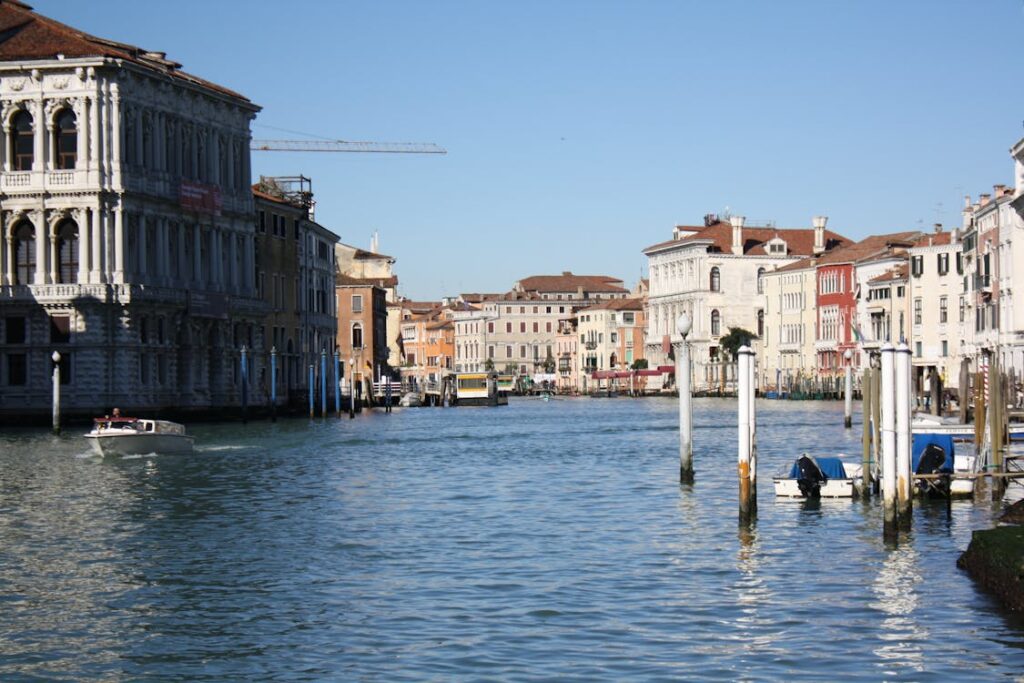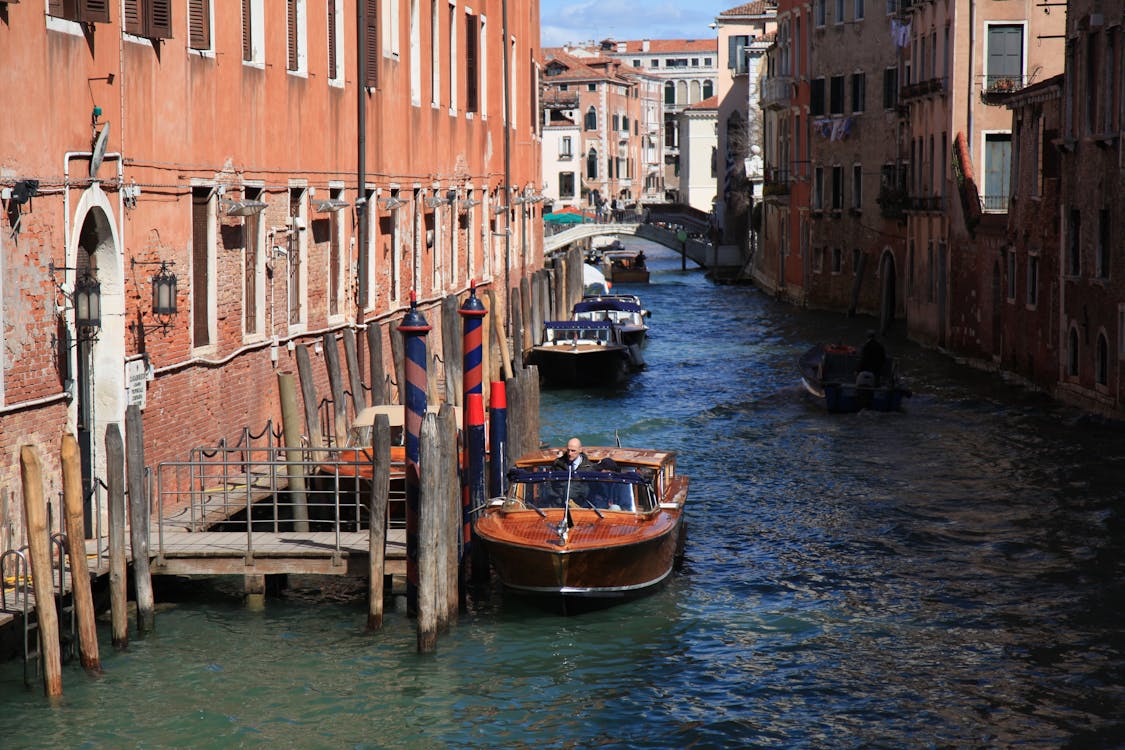Imagine floating past sleepy villages and wildflower meadows, where the only rush is the gentle water ripple beside your boat. Slow travel is all about savoring these moments, moving at a relaxed pace, and letting each turn in the canal tell its story. For anyone craving an escape from the crowds, the forgotten canals in Europe promise a rare kind of magic—one where history, culture, and nature still linger just out of sight from busy highways and tour buses.
- Forgotten canals offer peaceful escapes, far from highways and busy tourist spots.
- Slow travel here means moving gently, enjoying every small moment on the water.
- Local life, history, and untouched nature are easy to find along these quiet waterways.
- The journey is about relaxation, not rushing—each bend brings a new view or story.
- These hidden routes create space for a genuine connection with the land and its people.
This post uncovers how these overlooked canals create the perfect backdrop for mindful exploration, whether you’re a solo traveler, backpacker, or simply looking for a more meaningful way to experience Europe.
Why Forgotten Canals Are Ideal For Slow Travel

Forgotten European canals promise pure, slow travel—think lazy days, untouched scenery, and zero stress. Swap bustling highways for quiet water and echoing bird calls, and you’ll soon find why these hidden blueways are perfect for anyone wanting real downtime. For slow travelers, these routes are more than shortcuts; they are living stories connecting the past and the present at a relaxed pace.
Space For Discovery And Reflection
Life on a forgotten canal gives you mental and physical space that’s rare in today’s busy world. You move at the speed of the water, not the clock, finding time to watch heron fish or chat with locals at a dockside café. This slow journey lets memories build naturally, and every bend brings a new picture postcard moment.
- Take photos without a crowd in every shot.
- Pause to explore sleepy villages local tourists may never see.
- Enjoy a picnic with only the splash of ducks as your soundtrack.
Authentic Connections With Local Life
One big draw of these overlooked canals is how easily you can connect with real, local culture. Unlike busy city centers, these waterways wind through places where traditions are lived, not just shown. Barges tied to old stone quays, friendly lock-keepers, and markets spilling onto towpaths—slow travel gives you the time to join in.
Every day feels like a new chapter, from picking up fresh bread at a riverside shop to joining a festival you happened upon by chance. France’s wild Marais Poitevin, often called “Green Venice,” is the perfect example. It’s a patchwork of waterways and villages where, as covered by Euronews in their story on Marais Poitevin, travelers can kayak, bike, and chat with gardeners who have been shaping the region for generations.
Close Encounters With Nature
Craving a recharge? These forgotten canals are a front-row ticket to Europe’s untamed side. Wildflowers, herons, willows brushing the water—it feels like stepping into a living painting. Because these waterways seldom see crowds, wildlife isn’t scared off. Each outing feels new.
- Spot kingfishers, deer, and otters just steps from your moored boat.
- See plants and landscapes you won’t find in travel brochures.
- Take leisurely walks or bike rides along sun-dappled towpaths.
A Stress-Free, Customizable Pace
Slow travel is about choosing your tempo, precisely what forgotten canals deliver. Want to linger in a cozy town or cruise for hours with nothing but water ahead? It’s up to you. These peaceful routes are ideal for seasoned travelers and those dipping their toes into canal cruising for the first time.
To make planning even smoother, lightweight travel backpacks like those from Osprey make on-and-off-the-boat exploring easy and comfortable. With forgotten canals offering time and space to truly reconnect with yourself, every bend becomes a chance for adventure at your own pace.
Europe’s Hidden Waterways: 5 Forgotten Canals To Explore

Europe’s forgotten canals offer the perfect escape for anyone who dreams of slow travel, gentle movement, and stories you won’t find in glossy brochures. These hidden waterways are a destination for travelers who hate crowds, offering scenic routes that nourish the soul—a blend of nature, culture, and authentic rural charm. Let’s explore five unique waterways where timeless beauty and unhurried discovery set the scene for memories you’ll treasure.
Canal du Nivernais, France
The Canal du Nivernais is a living postcard of rural France. Built in the late 18th century, this waterway winds through the lush Burgundy countryside and is lined by towpaths, vineyards, and woodlands. As you glide by boat or pedal by bike, you’ll pass through emerald fields and villages that feel frozen in time.
- Key Highlights: Flower-laden locks, old stone bridges, and centuries-old hamlets like Clamecy and Chitry-les-Mines.
- Boating and Cycling: The gentle current makes it welcoming for novice boaters and seasoned cyclists. Towpaths stretch for miles, offering easy stops at markets or for riverside picnics.
- Cultural Stops: Explore ancient abbeys, tiny museums, or artisan workshops along the way.
- Taste of France: Don’t skip the hearty regional dishes featuring Charolais beef or local cheese in canal-side bistros.
Shropshire Union Canal, England
If you dream of classic English countryside, the Shropshire Union Canal delivers peace and storybook scenes. This canal snakes through farmland, wild hedgerows, and welcoming villages. Life here moves slowly, and the towpath is shared by walkers, anglers, and curious swans.
- Serene Waters: Unhurried boat traffic and long stretches of silence let wildlife thrive. Keep an eye out for herons, kingfishers, and otters.
- Village Charm: Moor in places like Audlem or Market Drayton to soak up market days and historic pubs with centuries-old beams.
- Narrowboating Tradition: Renting a colorful narrowboat is a rite of passage—a floating cottage where every day feels like Sunday.
Göta Canal, Sweden
Sweden’s Göta Canal is famous for its graceful engineering and sparkling clean scenery. Built in the early 19th century, the canal connected the Baltic Sea to the country’s vast inland lakes. It’s all about peace, natural beauty, and outdoor adventure today.
- Scenic Cycling and Boating: Well-tended paths run alongside tranquil waters while boaters drift lazily through wildflower meadows and dense pine forests.
- Locks and Lakes: Nearly 60 locks along the route make each day an adventure. The views of lakes Vättern and Vänern invite endless photo stops.
- Swedish Countryside: Stop in the small towns for cinnamon buns and fresh coffee, or just soak up the sound of birds and gentle breezes.
Traveling the Göta Canal is the closest thing to stepping inside a watercolor painting—soft colors, gentle light, and that priceless sense you have all the time in the world.
Bruges-Ghent Canal, Belgium
This delightful canal between Bruges and Ghent is a treasure for culture seekers and cafe lovers. Lined by medieval towns, willow trees, and crooked art studios, it offers a unique way to see two of Belgium’s most charming cities.
- Medieval Magic: Start in Bruges, with its winding lanes and market squares, and float or pedal to historic Ghent, alive with music and art.
- Waterside Art and Cafes: You’ll spot artists painting from their barges, and easy paths tempt you to linger at canal-side cafes, waffles in hand.
- Choose Your Pace: Take a guided boat tour to learn the stories behind the bridges or cycle between the cities for some exercise and freedom.
The forgotten canals like Bruges-Ghent are perfect for soaking up Europe’s artsy side at a pace that lets you fully appreciate the journey.
Naviglio di Bereguardo, Italy
Cutting through Lombardy’s peaceful heart, the Naviglio di Bereguardo is a favorite for travelers hungry for tradition and tranquility. Leonardo da Vinci worked on this centuries-old canal’s unique lock system, and his legacy lingers in every stretch of water.
- Leonardo’s Legacy: Old locks and ingenious water management are a testament to Renaissance innovation.
- Tree-lined Peace: Broad towpaths shaded by poplars are a paradise for quiet walks or bike rides.
- Local Life and Food: Canalside trattorias serve regional specialties—think risotto, homemade salami, and creamy cheeses.
From Burgundian hills to English meadows and Swedish lakes, each of these forgotten canals showcases the real beauty of Europe—best enjoyed slow and steady, with forgotten canals as your guide. Experiencing forgotten canals is about more than scenic routes—filling your days with genuine, slow travel activities that leave room for discovery and real-life connection.
Final Thoughts
The joys of exploring forgotten canals across Europe go far beyond pretty scenery. These peaceful waterways invite slow, mindful travel where every day feels unhurried and rich with discovery. You connect with local traditions, taste authentic flavors, and watch landscapes change at the pace of your journey.
- Research which canals suit your travel style—decide if you want quiet countryside, small towns, or a mix.
- Plan your route with time for unplanned stops, leaving space for market days or local events.
- Pack versatile gear to walk, cycle, or paddle, making the most of each region.
- Try local food from canal-side markets or small cafes to get an authentic taste of the area.
- Keep a journal or photo log to capture small daily discoveries—these memories become the heart of your trip.
Choosing forgotten canals as your route lets you escape crowds and find adventure on your terms. It’s about genuine moments—like sharing stories with boat neighbors or pausing in a quiet village market. If you’re planning your first trip or craving a more meaningful way to travel, these lesser-known routes offer a special kind of freedom.





